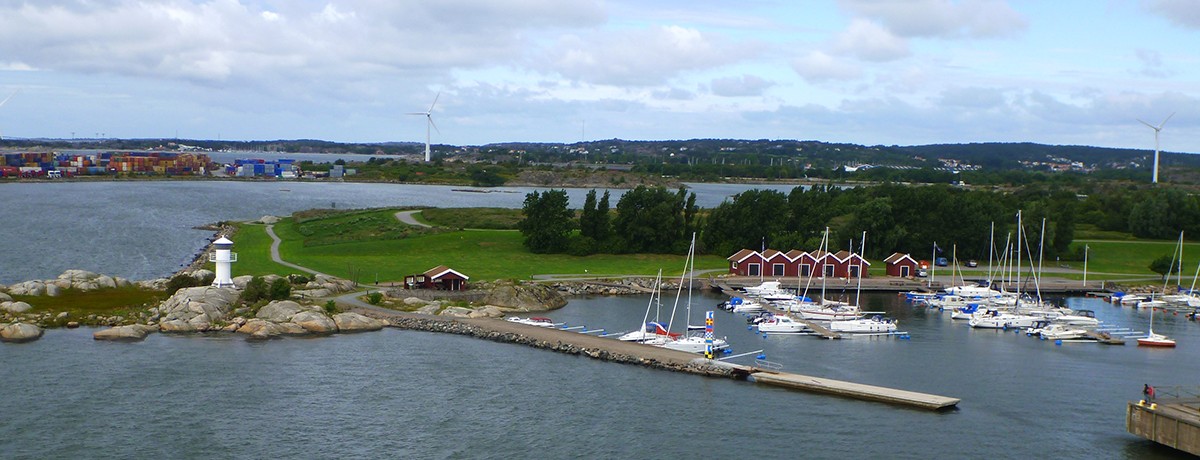They share a common name, the men who row, but Russians and Swedes had paddled through history towards rather different destinations.
It is a bleak day of Scandinavian August. The northern seas are choppy and leaden under a gray sky and in my mind’s eye I see the same relentless waves as they have been pierced for centuries by long wooden boats. I see Ingvar the Far-Travelled, sailing these same waters on his return after the conquest of Kiev and the Battle of Sasireti in Georgia. Standing erect at the bow of his longboat he is talking with his cousin, proud of the new country they conquered by their swords and dubbed by their oars: Kiev Rus.
His muscular men are pulling the oars with long strikes, driving the longboat closer and closer to shore. These rowing Vikings are the ones that lend their name, Rus, to both the Russians and the Swedes. Yes, the name Rus', like the Finnish name for Sweden (Ruotsi), is derived from an Old Norse term for "the men who row" (rods-) as rowing was the main method of navigating the rivers of Eastern Europe. One thing is certain, the Russians and the Swedes had rowed through history towards quite different destinations.
Shading his eyes and looking toward the shore, Ingvar suddenly blinks in surprise.
Like me, he just noticed the waterfront is dominated by the bland, massive building of the Volvo museum and warehouses, and Volvo cars is now owned by the Chinese Geely.
“Gamla lombungr,” he swears loudly, “is Odin going to stand by idly and allow these industrious yellow fanden of the East to purchase the entire universe?”
Our ship moors just in front of the museum and I dismiss the illusion of Ingvar with a chuckle. In fact, the city which is now the second largest in Sweden, was only founded in 1621, as a heavily fortified, primarily Dutch, trading colony.
An overcast gray sky threatens the city with the prospect of rain. We take a shuttle bus to Gustaf Adolfs torg (Gustaf Adolf's square) which until 1854 when the statue of the founding father of Gothenburg, king Gustavus Adolphus of Sweden was raised, was known as Stortorget (the Big Square).
Opened in 1923, the 175 hectares Gothenburg Botanical Garden, opened in 1923 it is considered to be one of the most important botanical gardens in Europe. While we enjoy the beauty of the extensive rose collection, the fickle Nordic sun which tried all morning without success to break through the dense clouds is finally giving up. A light rain starts pelting us. It will be our constant annoying companion until we’ll leave Gothenburg for sunnier shores.
"Non-Violence" is a bronze sculpture by Swedish artist Carl Fredrik Reuterswärd depicting an oversized Colt Python .357 Magnum revolver with a knotted barrel and the muzzle pointing upwards. Reuterswärd made this sculpture after John Lennon's murder. There are currently 21 copies of the sculpture around the world, twelve of them in Sweden.
Gotaplatsen, located at the top of the avenue with theatre, Concert hall and museum of art. New colorful illuminated fountain in street in front of the Poseidon statue.
The town history was heavily influenced by the Dutch and by the Scots who settled down in Gothenburg. These days the city is embracing more far-flung influences, like this Japanese ice-cream advertised as mochi from Hawaii.
As we wound our way through the sodden streets, the rain keeps coming. An incessant cold drizzle, the kind that insinuated its way into every gap in weatherproof clothing, leaving you cold and clammy in a matter of minutes. Even the trees look fed up.
“Are you kidding me?” I murmur under my breath. “What was Louis XVI thinking when he gave up Saint Barts, a sparkling jewel in the sunny Caribbean necklace for trading rights in this gloomy, rainy piece of northern real estate? No wonder the guy ended up on the guillotine!”
With such gloomy weather, one might wonder how come the Swedes are such content people.
The secret of Swedish contentment is 'lagom,' a word with no English equivalent. It means not too much, not too little – just right. The word derives from a shortening of the phrase “laget om”, which literally means “around the team”. Lagom is “the median, the middle, the appropriate”.
Back in the Viking days, mead would be passed around, 'laget om', and everyone would take their sips. For Scandi psyche, the same applies today: "There is something for everyone, if everyone just takes a lagom amount from the mead when it comes around.” Crucially, the foundation of lagom is contentment, a sense that things are sufficient just as they are. The archetypical Swedish proverb, “Lagom är bäst”, literally means, “The right amount is best” but is also translated as “Enough is as good as a feast” and “There is virtue in moderation”.
For Swedes, lagom is a lifestyle, a habit of mind. A perfect representation of Scandinavian lagom is found in the simple everyday tradition of fika.
Gothenburg's Haga district is known for its picturesque wooden houses, thrift shops and its cafés serving the well-known Haga bulle – a huge cinnamon roll similar to the kanelbulle. Its banners advertise shops and ... fika.
Central to fika is the Swedish aversion to working for longer than you should. In North America it’s all about working longer and harder to get status and money. In Sweden that’s frowned upon and that is why in Gothenburg the Swedes started testing a six hours work day. It’s so much better to pop out for fika, or take a few months off work to travel with your family.
Realization creeps slowly on me. I’ve been embracing fika for years.
Valentin Tomescu
The journey continues
Next Visit - Saint Petersburg
